Okami HD Review
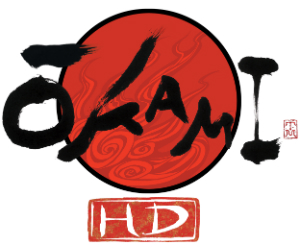 Game: Okami HD
Game: Okami HD
Developer: Capcom/HexaDrive
Publisher: Capcom
Available on: PlayStation 3 Only
Clover Studio burned extremely brightly during their short period of existence. Indeed, there cannot be many game studios with such an impressive strike-rate in terms of superb games released. Viewtiful Joe was a hardcore old-school platform beat ‘em up at heart with plenty of Noughties innovation, the limited Smash Brothers clone Red Hot Rumble was a series which was spread too thinly, while the decidedly strange God Hand has now attained a cult status with its mix of rock-hard fighting action and crazy off-the-wall humour. When I think of Clover, however, there is one game that stands head and shoulders above the rest of their work.
I imported Okami from the United States back in 2006, intrigued by the footage I had seen of the stunning art style, and promises of gameplay reminiscent of The Legend of Zelda series. To say I was blown away is an understatement. Critics at the time issued perfect scores, with words like “masterpiece” being thrown around like the many dazzling petals and leaves that play with your senses when playing the game. In many ways Clover actually outperformed Nintendo’s flagship adventure series, combining similar dungeon conquering, story-driven questing with perhaps the most incredible aesthetics ever seen in a game; not to mention an utterly unique game mechanic that sounds unwieldy on paper (if you will forgive my pun) yet works so sublimely in practise. It has always puzzled me how few people have heard of Okami and how seldom it appears when it comes down to the discussions about the finest moments in gaming.
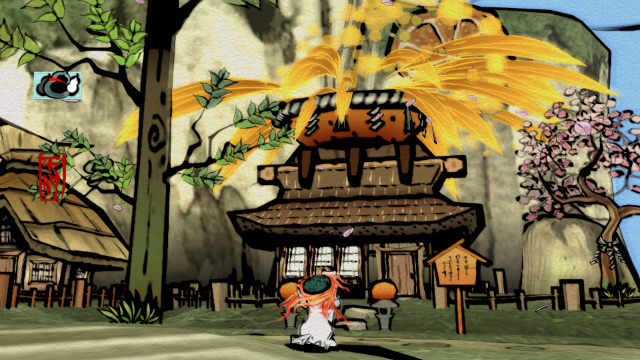
Even a re-release for the Wii, a logical step when one considers how the game operates, did not garner the sales or recognition the game deserves. In spite of this, someone over at Capcom felt that the game was a fine candidate for a high-definition makeover, and teamed up with HexaDrive, the firm who pulled off a terrific HD version of SEGA’s Rez. I for one am glad that they did. Translated directly from the Japanese, the name Okami means, simply, “wolf”, this spruced up remaster is known in Japan as Okami Zekkei-ban, which can be loosely translated as Wolf: Magnificent Version. Has there ever been a more apt name?
For those who have never experienced Okami, first of all can I just congratulate you and tell you how jealous I am. For you get to step into the ancient Japan-inspired realms within, and get the same spine tingling feeling that I got back in 2006. As a lengthy introductory sequence explains (and be warned, it takes the best part of twenty five minutes), you play the part of Amaterasu, a graceful, beautifully designed wolf who is the earthly embodiment of a sun goddess. The foul demon Orochi has returned to blight the land after a 100-year absence, and it is your job – along with a tiny, bug-like creature called Issun – to help restore the world to normality, harnessing the power of the Celestial Brush in order to achieve this.
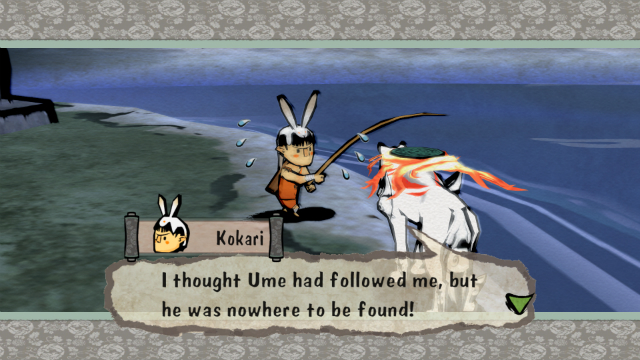
Following a very similar structure to a latter-day Zelda, you travel between areas of a vast map of ancient Nippon, battle enemies and unlock new abilities which are drip fed to you in the same manner that Link is issued with new weapons and tools. The difference is that when in control of Amaterasu, you literally hold the power to restore the light to the darkness, to help withered flora burst back to life, to see the world change for the better before your very eyes with a sweep of the brilliant brush at your disposal. Hitting R1 (or using the Move controller, which is supported here) slows the game to a static screen. You then hold down a button and use the brush to draw strokes onto the canvas. This has a number of effects depending on the situation, and which abilities you have unlocked. At its most basic level, a straight line drawn through a bamboo shoot will cut it in half in-game once you release the R1 button. In combat, you can use strokes of the brush to finish off dazed enemies, or pepper your foes with inky projectiles by drawing dots on their image. Focusing on a spooky looking, dead black tree and drawing a circle around it will bring it impressively back to life in an explosion of gorgeous pink blossoms. Painting where there is a gap in a broken bridge will restore the walkway and enable you to cross. There are myriad ways to employ the Celestial Brush, which enthrall and excite as each new technique is introduced. In an age where games can be defined by their ultra-realistic violence, it is a blessing and a treat to be able to draw your own lily pads on a shimmering blue waterway, to change the time of day by drawing the sun in the sky, or to bring a little girl’s flower garden back into spectacular bloom.
Okami is bursting with things to see and do and, while the focus is primarily on defeating the excellently realised bosses and beating each dungeon, there are a number of distractions too. Doing good in Amaterasu’s world, whether that is rejuvenating a tree, or fixing a broken water mill, will award Praise – XP if you will – which allows you to level up your statistics. There are some novel ways to rack up your Praise, my favourite being the ability to feed animals using different types of food which you can find dotted around the landscape or buy from merchants. There are several different kinds of animals in Okami’s bestiary, all requiring corresponding grub. Birds are fed with seeds, rabbits love herbs, whilst dogs and foxes are only satisfied with a chunk of meat. In addition to providing dinner to the many denizens of the land, there are also many hidden treasures, including clover (geddit?) leaves that can be dug up and drawn back to life, and chests containing statues you can sell for a profit.
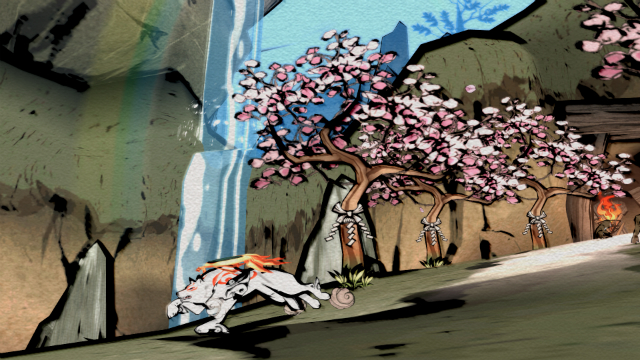
The story is beautifully told, with plenty of humour coming from the lovable Issun, dopey warrior Susano and the mysterious, yet extremely cocky Waka. Finding out what is going to happen next is as compulsive as the desire to unlock the next Brush technique, and although I was returning to a game I had defeated previously, it was like reacquainting myself with an old friend, and I had soon lost twelve hours to it in what seemed like a heartbeat.
HexaDrive have done an incredible job of porting the game to the current generation of consoles. The DualShock control set up works as well as it ever did, with the Move controller doing exactly the same job that the Wiimote already did, allowing the wand to paint your Celestial Brush strokes, and the Navigation controller used to move Amaterasu. Both control methods work well, and while I will always prefer the standard controller, the Move control method is intuitive and well-implemented. Crucially, the port has been undertaken retaining the unforgettable graphics that made the original so unique. The PlayStation 2 and Wii versions had a blurring effect which helped give the illusion that you were watching a living, breathing canvas. The way things moved and the brush-on-canvas effects were so beloved by Capcom that they unashamedly used them again to similarly great effect for Street Fighter IV. The HD remaster allows you to apply this filter should you wish yet, as with many cel-shaded games, the graphics stand up tremendously well, and it looks good with the filter in place or without. Everything is so crisp, so fluid, so starkly beautiful that you wonder why all games don’t look like this. Amaterasu is surely one of the most lovingly animated game protagonists of all time, as she bounds across the landscape, leaving a trail of blossoms, scarlet leaves and sprouting flora in her wake. The sinister cast of enemies are also triumphs of design, many of them wielding musical instruments, such as a gang of tricky, flute playing, drum beating demons who are always a pleasure to defeat using your dual weapon attacks. Everything is held together by a wonderful sonic tapestry of traditional-sounding music, string flourishes as action sound effects, wonderfully primal battle themes, and the endearing gibberish-speak of Issun and the huge cast of speaking characters. Like Hyrule, the world of Okami works so much better for the fact that you never really hear a proper human voice.
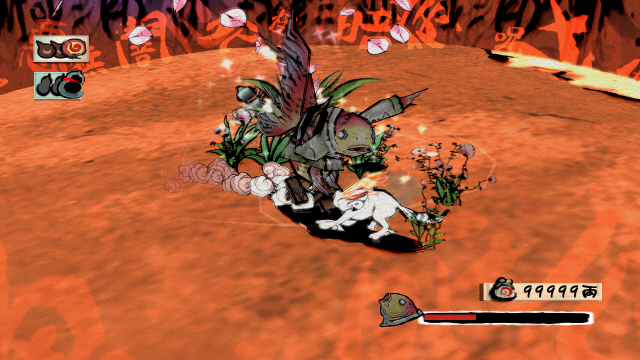
VERDICT: I would be extremely surprised if I play a better downloadable game in 2012. Okami has aged extraordinarily well. The gameplay is actually far more imaginative, intuitive and enjoyable than most of the post-Majora Zelda titles. It is very easy to forgive just how many tropes Clover pinched from Nintendo here, and it stands as almost a homage, much the same as Cave Story also stole wholesale from the games that influenced it, yet made a brilliantly unique take on the genre. It is a game that seemingly few people played the first time around, and Capcom are taking a gamble on whether the class of 2012 are going to want to shell out for this PSN download. Quite simply put, Okami is an essential purchase. It gives you around sixty hours of the most beautiful gaming you will ever experience, a quest which makes you beam with joy at almost every turn. It is a game that should be spoken of in the same regard as Capcom’s better known classics, and is easily one of the finest games in their considerable canon.





